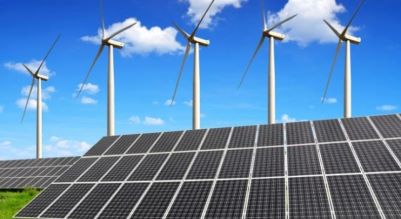In non-fossil, hydrogen will play a bigger role and to foster hydrogen economy, NTPC is involved in pilot scale projects on hydrogen mobility, methanol production, hydrogen and carbon capture, blending of hydrogen and natural gas, green ammonia and hydrogen micro-grid

India has already moved forward in terms of achieving its renewable energy commitments and it is quite likely to exceed the same, says Mohit Bhargava, Executive Director - Renewable Initiative, NTPC.
“One of the main targets is to achieve 40 percent of installed capacity in non-fossil fuels by 2030. Towards this end, India has embarked on a journey to reach 450 GW of renewable capacity by 2030. As of date, we already stand on 98 GW of energy capacity. In February 2021, one of the major initiatives launched by the Government of India was for the clean energy sector. As India is getting ready for that, Hydrogen is set to be an essential integrator. Higher goals are harnessing enough, balancing inter-mitten supply and demand, supporting a clean energy system and reduction of hydrocarbon import bill. To foster hydrogen economy, NTPC is involved in pilot scale projects on hydrogen mobility, methanol production, hydrogen and carbon capture, blending of hydrogen and natural gas, green ammonia and hydrogen micro-grid,” said Bhargava.
Explaining the key drivers for hydrogen economy, Bhargava commented, “Hydrogen has become an integral part of the refining industry. It has potential to support the energy transition, particularly the green hydrogen. Two key developments have facilitated the growth of hydrogen. Rapid reduction of non-renewables is creating the possibility of green hydrogen and increasing urgency to reduce greenhouse carbon emissions. Water remains the top source of hydrogen generation as the process of electrolysis helps to extract the green hydrogen. However, the challenge is that green hydrogen is more expensive than other forms such as grey hydrogen or blue hydrogen.”
As per Vivek Kumar Dewangan, Additional Secretary, Ministry of Power, the top priority areas include lowering costs of hydrogen and related technologies, creating standards and safety regulations, and hydrogen related infrastructure. “Since India is a signatory to the Paris Agreement of 2015, we need to work on time bound targets for reduction of fossil fuel use by 2030. As a national contribution, we are going to increase installation capacity from non-fossil fuel by 40 percent by 2030. I am sure we are going to over achieve this target because by the end of March, 2021, we will have already touched 38 percent capacity of non-fossil fuels and by 2030, we will reach about 60 percent of total installed capacity. Policy and investment decisions that are required for promoting green hydrogen which will include creating demand and supporting infrastructure development like reduction of cost of solar power, removing interstate transmission charges of electricity being used for hydrogen generation.”
Providing a peek into the statistics during a panel discussion on ‘Prioritizing production of green hydrogen’, Dewangan highlighted the need for bringing down the production cost. “The green hydrogen produced through electrolysis is estimated to cost about US $4.7 per Kg. Electrolyzer capex is US $900 per kilowatt at an efficiency of 6.5 percent. The capex of solar and EV is at the rate of US $0.2 million per megawatt. In comparison, hydrogen production is cheap and costs about US $1.7 per kg while CNG is at US $6 per million metric thermal unit. It is estimated that about 6.9 million metric tonnes of hydrogen is consumed in India currently. The 59 percent of this capacity is utilized in petroleum refineries which is around 3.9 million metric tonnes. The hydrogen used in manufacturing ammonia in fertilizers is about 3 million metric tonnes.”
Sharing his future outlook, Dewanagan says, “Considering the growth projections in refining and other sectors by 2030, the overall demand for hydrogen is expected to grow to about 11.7 million metric tonnes per annum in India which will comprise of 6.8 million metric tonnes in refining and 4.6 million metric tonnes in fertilizer production, besides 0.3 million metric tonnes for other sectors. Almost all the hydrogen utilized in the petroleum and fertilizer industry is grey hydrogen which is fossil fuel based such as natural gas and naphtha. Mandating the usage of green hydrogen in the industrial units that use grey hydrogen could create a substantial market for it. Production suggests that if the economy is of scale, and costs of electrolyzers are managed, the green hydrogen could become cost competitive with growing volume.”
Subscribe to our newsletter & stay updated.